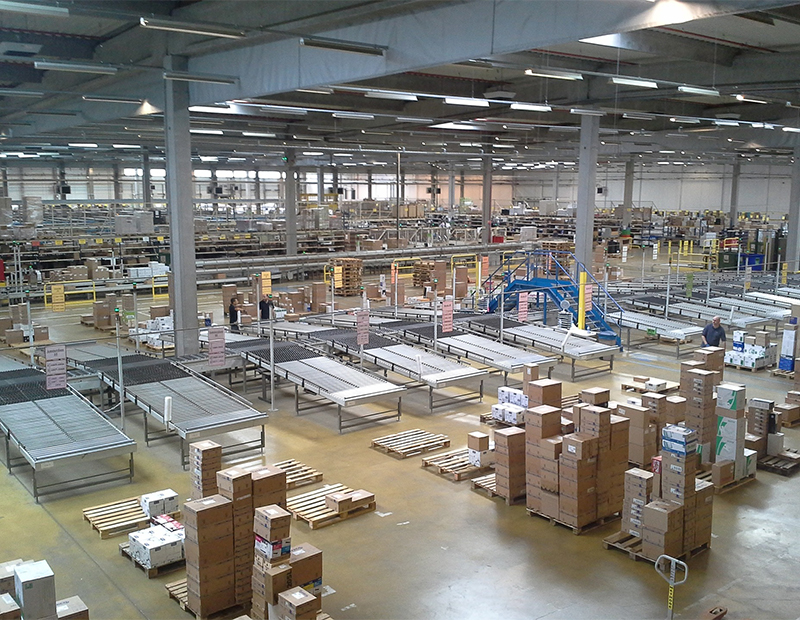Industrial Outlook for 2020-2021 Remains Strong
A new Cushman & Wakefield report outlines some of the key trends and economic indicators affecting the sector.
Aided by strong supply, consumer spending and other economic indicators, the North American industrial sector is projected to remain one of the leading commercial real estate product types over the next two years, according to Cushman & Wakefield.
READ ALSO: Another Banner Year Ahead for Industrial Market
The firm’s forecast for industrial absorption for 2020-2021 is nearly 460 million square feet, as new supply finally surpasses demand. The 2020 North American Industrial Outlook expects supply levels to reach 573.4 million square feet from 2020 to 2021, but notes vacancy will still remain at about 5 percent. It should end 2021 at about 5.2 percent, up 60 basis points from year-end 2019. The report also projects asking rents to increase by 6.8 percent and reach $6.95 per square foot by the end of 2021, up from $6.51 per square foot in 2019.
The top five markets for demand and supply are expected to be the same in 2020 through 2021, with Dallas/Fort Worth, Texas, leading both lists with about 45.1 million square feet of net absorption and 46.3 million square feet of supply deliveries during the two-year period. DFW is followed by: Inland Empire, Calif., with 42.2 million square feet of net absorption and 45.7 million square feet of expected supply deliveries; Atlanta, 30.1 million square feet of net absorption and 34.9 million square feet of expected supply deliveries; Chicago with 27.1 million of net absorption and 32.3 million square feet of expected supply deliveries and the I-81/I-78 Corridor in Pennsylvania, with 21.3 million square feet of net absorption and 26.5 million square feet of expected supply deliveries.
“Dallas is in growth mode due to many factors, such as strong population growth, a friendly business environment, low operating cost compared to other gateway markets and limited regional competitors,” local industrial broker Nathan Orbin, Cushman & Wakefield executive managing director, told Commercial Property Executive.
Rising rents
Due to the market’s high demand, the DFW industrial market is expected to see some of the strongest rent growth, according to the report. Across North America, seven markets are expected to see more than 10 percent rent growth, with the top three in Canada. Toronto is projected to see rent growth of 27.9 percent during the 2020-2021 period, followed by Montreal (25 percent) and Vancouver (21.9 percent). Also on the top rent increase list are: Las Vegas and Ottawa, both 12 percent; Providence, R.I. (11.1 percent) and Boston (10.4 percent). Other markets expected to have some of the strongest rent growth rates include those with the highest demand like DFW, Inland Empire, Chicago, Atlanta, the Pennsylvania I-80/I-78 corridor, Indianapolis and Central New Jersey. The report notes some supply-constrained markets, especially those close to inland and maritime ports like Los Angeles, Seattle, the San Francisco Peninsula and Orange County, Calif., are also expected to see higher rents between 2020 and 2021.
More key takeaways
- Trade policy is the most fluid aspect of the outlook. While there have been positive developments like the signing of the United States-Mexico-Canada Agreement (USMCA) into law last week and the signing of the first phase of a trade agreement with China three weeks ago, the Coronavirus crisis in China could impact implementation of that agreement. There is also concern whether the Phase One agreement can be enforced and so tariffs remain on many goods and a Phase Two deal may not happen.
- New leasing activity will be driven by traditional and online retailers, as well as third-party logistics providers seeking to deliver consumer goods at a grander and faster scale.
- Cold-storage facilities, infill/last-mile facilities and multistory warehouses will continue to be hot trends in the industrial sector.
- Gateway markets continued to attract a significant share of transaction activity (40 percent) in 2019, but liquidity was even greater in secondary markets for the second year in a row.
- Cap rates are at all-time lows due to strong investment demand combined with hot sector fundamentals. The report notes the decline in cap rates has been across all market tiers, classes and product sub-types. But it adds they are even lower in capacity-constrained markets like Los Angeles, New York/Northern New Jersey, Sam Francisco, Seattle and Miami.








You must be logged in to post a comment.